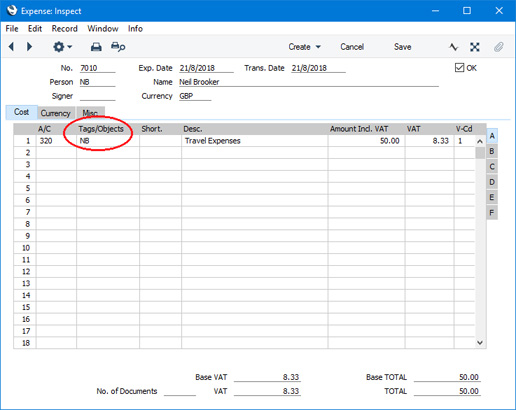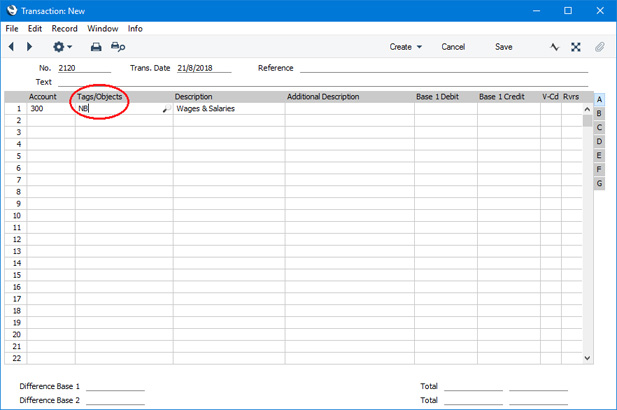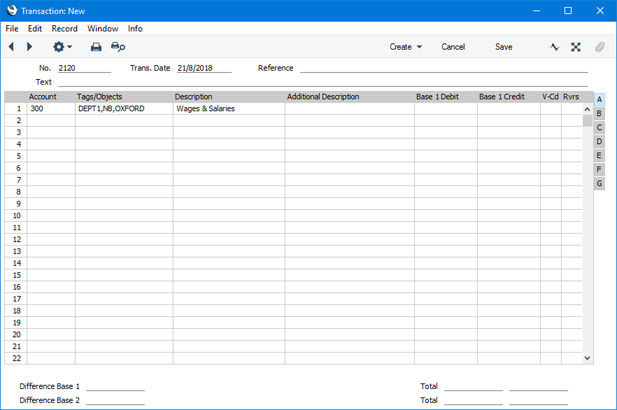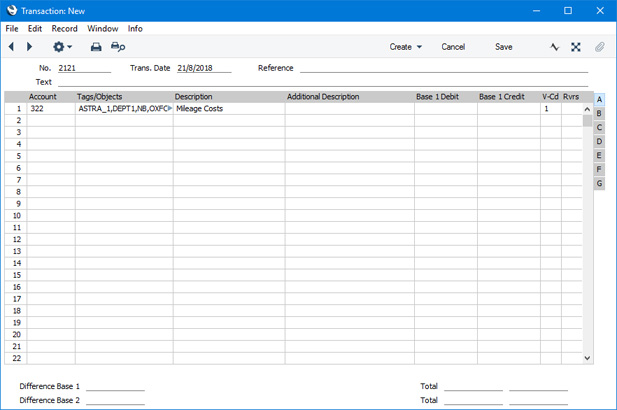Objects - Hierarchical Objects
You can assign a string or sequence of sub-Objects (or "hierarchical Objects") to an Object. Instead of having to remember to assign several Objects to each Transaction, when you use hierarchical Objects, you only need assign one Object and the others will be assigned automatically. This makes assigning Objects easier and faster and reduces the risk of making mistakes.
To add hierarchical Objects to a top-level Object, enter them in the Hier. Tags/Objects field in the record for the top-level Object. In the following example, we have defined an Object for the Person NB. In the Hier. Tags/Objects field we have entered Objects for the department and the office for which that Person works. These Objects must already exist in the Tag/Object register:

When you use the "NB" Object in a transaction of any kind, there will be no need to specify the Objects in the Hier. Tags/Objects field (in this case, "DEPT1" and "OXFORD"). The example below shows the "NB" Object being used in an
Expense record recording travel expenses:

The hierarchical Objects are not visible in the Expense record, but in the resulting Nominal Ledger Transaction, they will be added to the "NB" Object automatically. So, whenever you record a cost incurred by or a sale made by this Person, using the single "NB" Object will guarantee the correct assignment of the "DEPT1" and "OXFORD" Objects as well, in alphabetical order:

Hierarchical Objects are also very useful when you need to need to enter Nominal Ledger Transactions (journal postings) directly to the Transaction register yourself, because in this case no Objects will be offered by default. They help ensure you always assign the correct Objects, and the correct number of Objects. In the example illustrated below, we are entering a
Nominal Ledger Transaction recording Person NB's salary, and we have just entered the "NB" Object:

As soon as we move to the next field, the string of hierarchical Objects from the "NB" Object will be added to that Object:

You can include a hierarchical Object in the definition of another. Illustrated below is an Object representing NB's company car:

Since we have entered "NB" in the Hier. Tags/Objects field and "NB" itself contains hierarchical Objects, when we use the "Astra_1" Object to record the running costs of this car, it will expand to the combined contents of "ASTRA_1" and "NB", assigning those costs to the correct Person, department and branch:

As already mentioned, when you enter Nominal Ledger Transactions (journal postings) manually, no Objects will be offered by default. The hierarchical Object feature will help ensure that anyone entering a Nominal Ledger Transaction will attach every relevant Object to each posting.
---
In this chapter:
Go back to:
